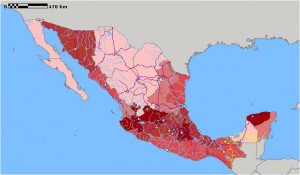Our loyal reader will know I have a weakness for applications which harness the power of hordes of distributed internet users, especially if they involve mapping. There was the thing about digitizing herbarium sheets. And the thing about mapping photos of tomatoes. 1 And of course there’s the Degree Confluence Project, which I thought I had blogged about but can’t find in our archives, so perhaps I didn’t, but I should.
The latest such project to come to my attention is called ScenicOrNot. The website presents you with a photograph of a location in Britain and you give it marks out of 10 for scenic beauty. Eventually, I suppose, there will be a map of scenic hotspots — and, for that matter, coldspots — but the developers are cagey about exactly why they are doing this. All fun enough, and possibly even useful, though I’m struggling to think of the agrobiodiversity relevance.
The photographs used by ScenicOrNot come from Geograph, which is doing a similar thing to the Degree Confluence Project, but only for Britain rather than the whole world. The idea is to document with a photograph every 1x1km grid square in the country: “8,570 users have contributed 1,267,685 images covering 242,182 grid squares, or 73.0% of the total.” Exploring that incredible resource does turn up some things of agricultural biodiversity interest. Check out, for example, the oast houses of Britain. The Degree Confluence dataset has been used to ground-truth a Global Map of Rainfed Cropland Areas. Not sure if a similar fate awaits the much denser British dataset.
